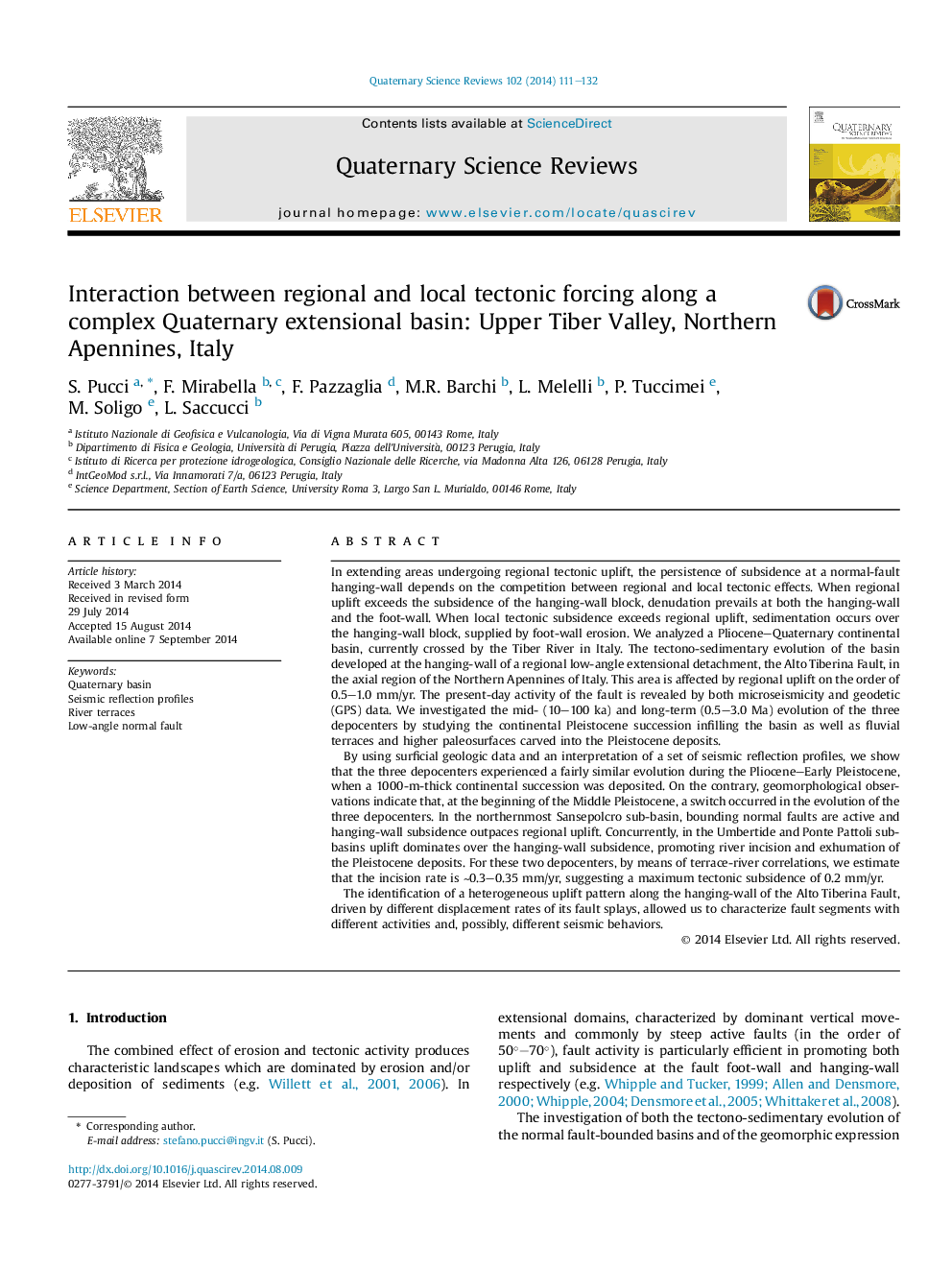| Article ID | Journal | Published Year | Pages | File Type |
|---|---|---|---|---|
| 4735324 | Quaternary Science Reviews | 2014 | 22 Pages |
•We analyzed a Plio-Quaternary basin developed at the hanging-wall of a low-angle normal fault.•Geologic and seismic data show a similar evolution of its three depocenters up to Early Pleistocene.•Geomorphological observations indicate a difference in their evolution from the Middle Pleistocene.•In the northern basin active normal faults and hanging-wall subsidence outpaces regional uplift.•In the southern basins river incision and exhumation is promoted due to lower tectonic subsidence.
In extending areas undergoing regional tectonic uplift, the persistence of subsidence at a normal-fault hanging-wall depends on the competition between regional and local tectonic effects. When regional uplift exceeds the subsidence of the hanging-wall block, denudation prevails at both the hanging-wall and the foot-wall. When local tectonic subsidence exceeds regional uplift, sedimentation occurs over the hanging-wall block, supplied by foot-wall erosion. We analyzed a Pliocene–Quaternary continental basin, currently crossed by the Tiber River in Italy. The tectono-sedimentary evolution of the basin developed at the hanging-wall of a regional low-angle extensional detachment, the Alto Tiberina Fault, in the axial region of the Northern Apennines of Italy. This area is affected by regional uplift on the order of 0.5–1.0 mm/yr. The present-day activity of the fault is revealed by both microseismicity and geodetic (GPS) data. We investigated the mid- (10–100 ka) and long-term (0.5–3.0 Ma) evolution of the three depocenters by studying the continental Pleistocene succession infilling the basin as well as fluvial terraces and higher paleosurfaces carved into the Pleistocene deposits.By using surficial geologic data and an interpretation of a set of seismic reflection profiles, we show that the three depocenters experienced a fairly similar evolution during the Pliocene–Early Pleistocene, when a 1000-m-thick continental succession was deposited. On the contrary, geomorphological observations indicate that, at the beginning of the Middle Pleistocene, a switch occurred in the evolution of the three depocenters. In the northernmost Sansepolcro sub-basin, bounding normal faults are active and hanging-wall subsidence outpaces regional uplift. Concurrently, in the Umbertide and Ponte Pattoli sub-basins uplift dominates over the hanging-wall subsidence, promoting river incision and exhumation of the Pleistocene deposits. For these two depocenters, by means of terrace-river correlations, we estimate that the incision rate is ∼0.3–0.35 mm/yr, suggesting a maximum tectonic subsidence of 0.2 mm/yr.The identification of a heterogeneous uplift pattern along the hanging-wall of the Alto Tiberina Fault, driven by different displacement rates of its fault splays, allowed us to characterize fault segments with different activities and, possibly, different seismic behaviors.
